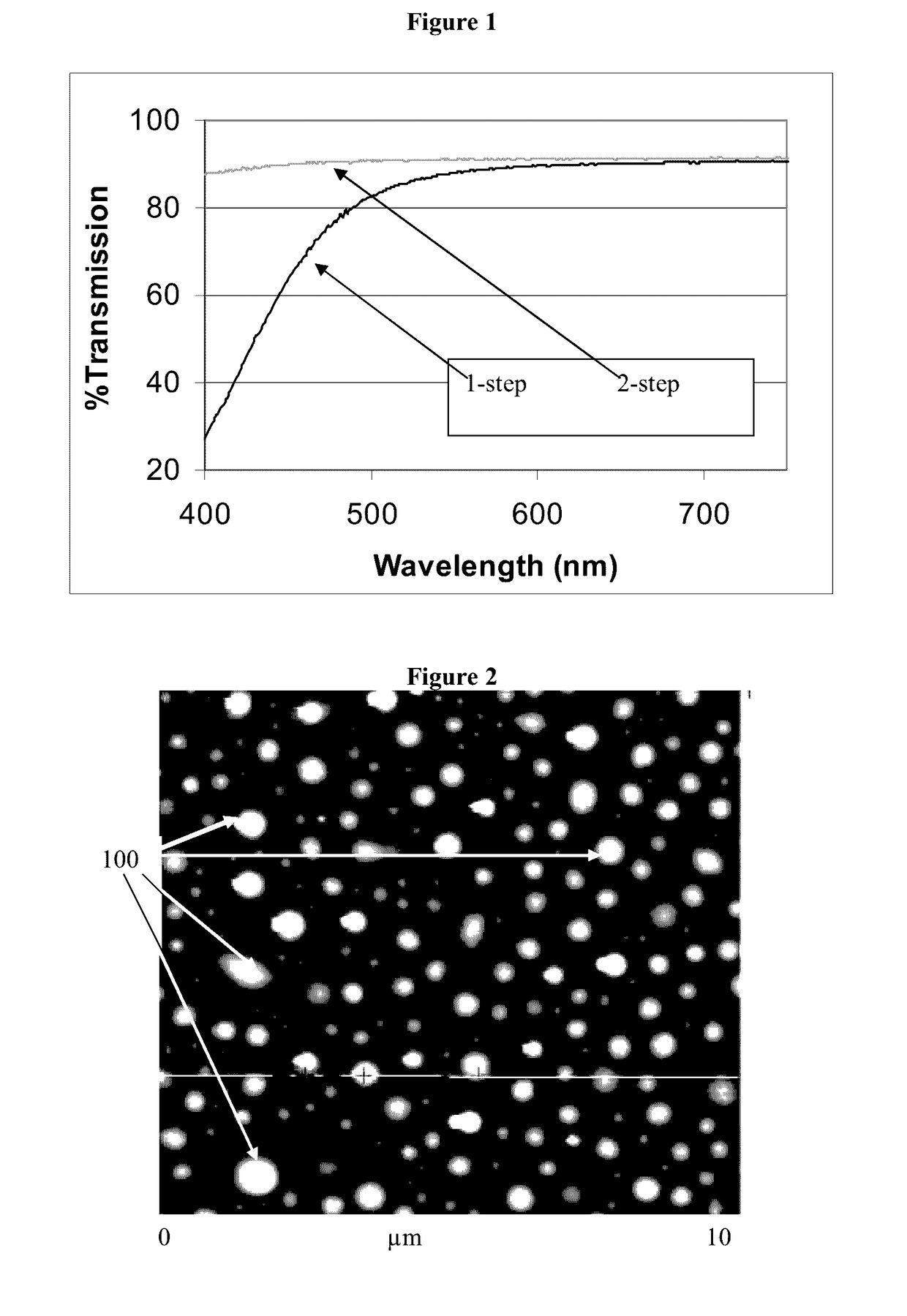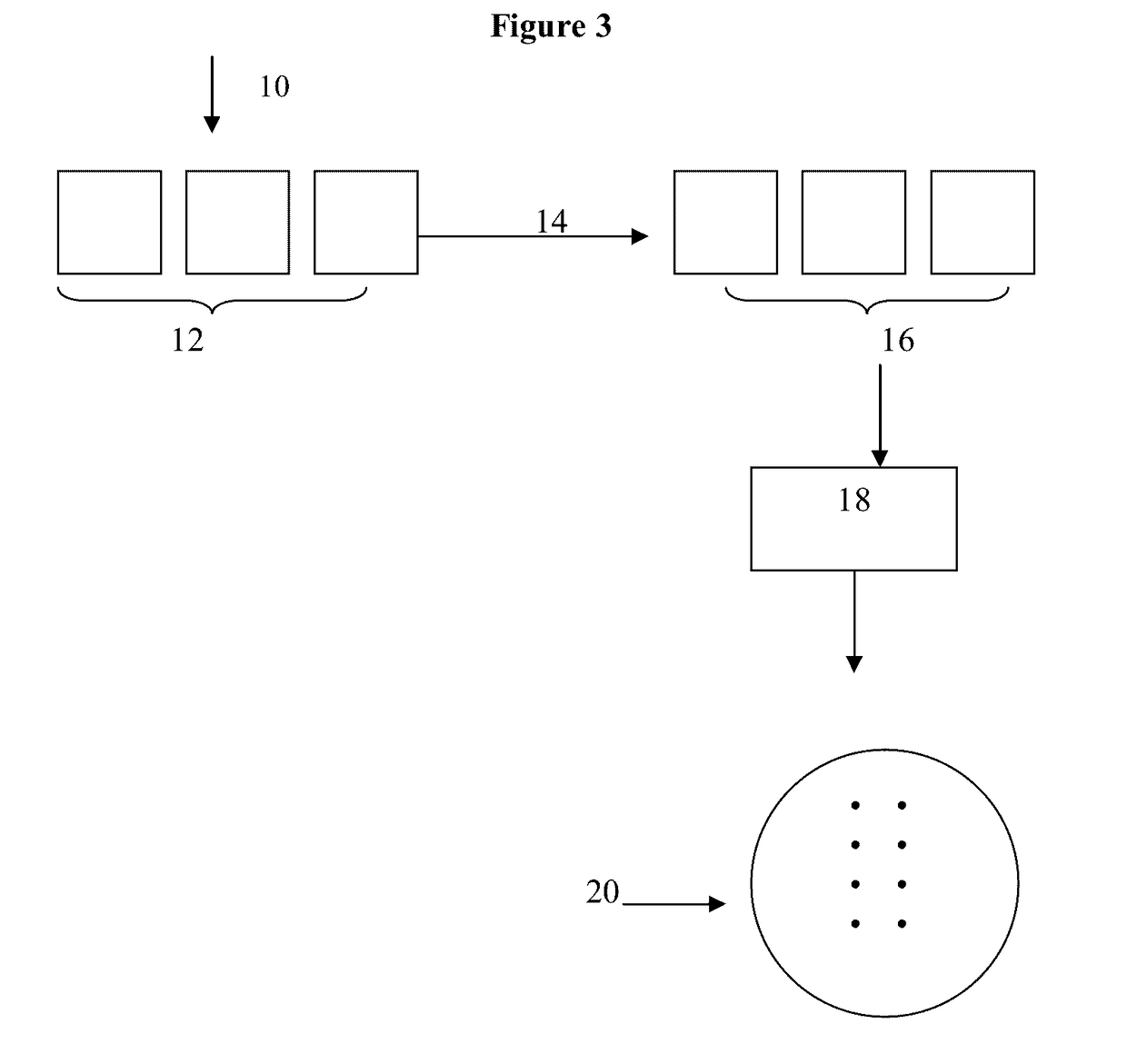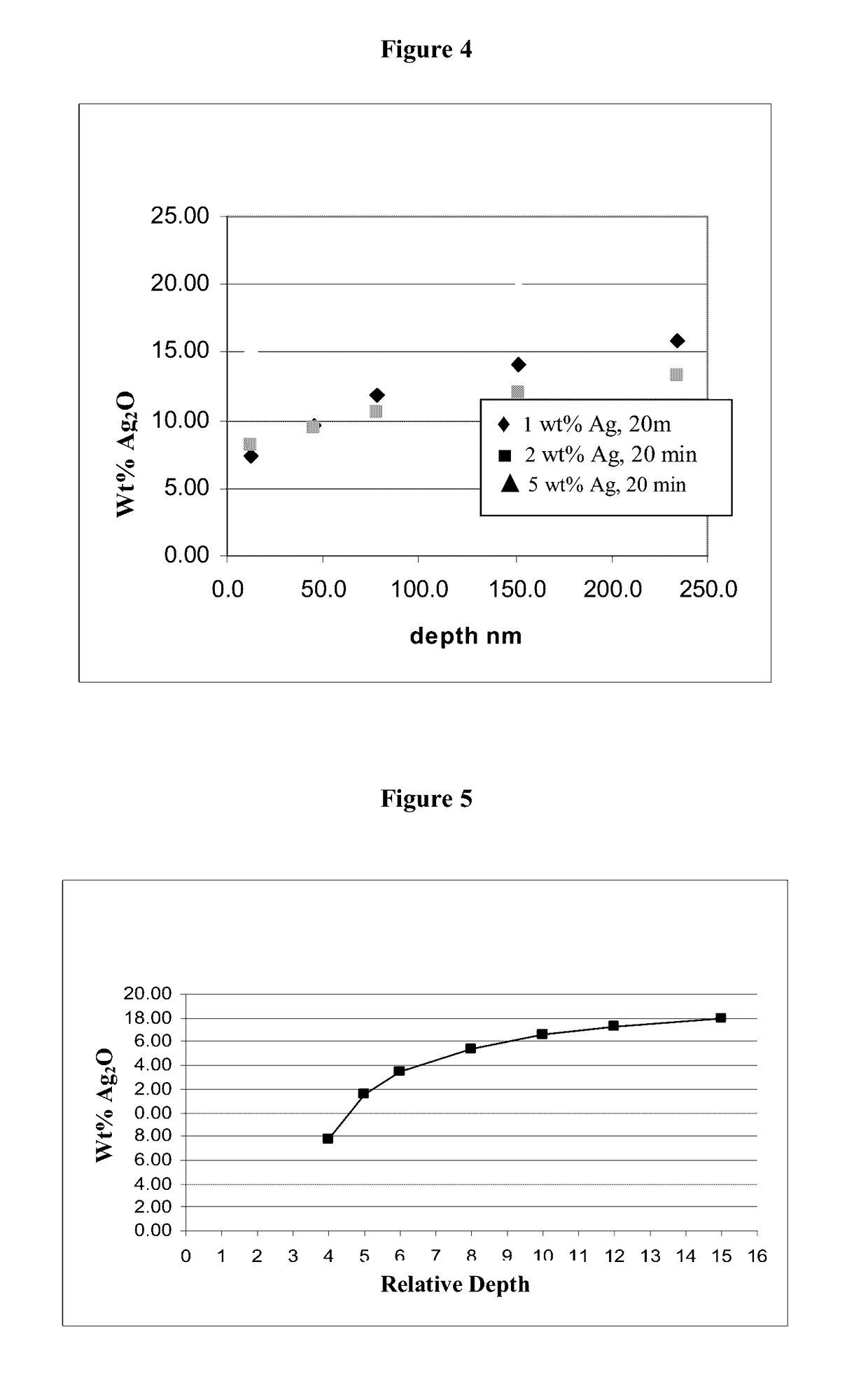Coated, antimicrobial, chemically strengthened glass and method of making
a technology antimicrobial properties, applied in the field of chemically strengthened glass, can solve the problems of significant color production, difficult task of creating a chemically strengthened glass with antimicrobial properties and having a functional coating on the glass, and glass unsuitable for electronic devices, etc., and achieve the effect of desirable transmittan
- Summary
- Abstract
- Description
- Claims
- Application Information
AI Technical Summary
Benefits of technology
Problems solved by technology
Method used
Image
Examples
Embodiment Construction
[0027]As used herein the term “antimicrobial,” means an agent or material, or a surface containing the agent or material that will kill or inhibit the growth of microbes from at least two of families consisting of bacteria, viruses and fungi. The term as used herein does not mean it will kill or inhibit the growth of all species microbes within such families, but that it will kill or inhibit the growth or one or more species of microbes from such families. The components of all the glass compositions suitable for ion-exchange are given in terms of weight percent (wt %) as the oxide unless indicated otherwise. The surface concentration of antimicrobial silver ions is given in μg / cm2 and refers to the concentration on the surface of the glass, and not to silver ions “near” or “close to” the surface. Also herein the term “2-step method” includes not only the glass compositions recited herein, but also any glass composition, from any source, that is suitable for chemical strengthening b...
PUM
| Property | Measurement | Unit |
|---|---|---|
| depth | aaaaa | aaaaa |
| thickness | aaaaa | aaaaa |
| wavelength | aaaaa | aaaaa |
Abstract
Description
Claims
Application Information
 Login to View More
Login to View More - R&D
- Intellectual Property
- Life Sciences
- Materials
- Tech Scout
- Unparalleled Data Quality
- Higher Quality Content
- 60% Fewer Hallucinations
Browse by: Latest US Patents, China's latest patents, Technical Efficacy Thesaurus, Application Domain, Technology Topic, Popular Technical Reports.
© 2025 PatSnap. All rights reserved.Legal|Privacy policy|Modern Slavery Act Transparency Statement|Sitemap|About US| Contact US: help@patsnap.com



